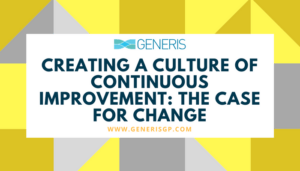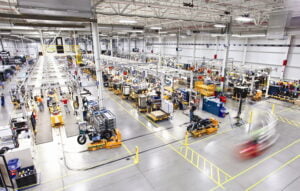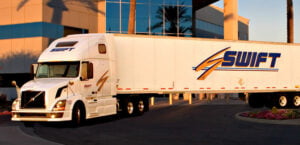 A lot has been written about how to truly implement continuous improvement processes and lean initiatives, you need to embed it in the culture of the organization. “Every company in manufacturing has to develop an operating philosophy, a standard methodology, and a language that creates a culture that focuses on continuous improvement,” Byron Greene, former VP & Head of Vehicle Assembly at FCA, explains.
A lot has been written about how to truly implement continuous improvement processes and lean initiatives, you need to embed it in the culture of the organization. “Every company in manufacturing has to develop an operating philosophy, a standard methodology, and a language that creates a culture that focuses on continuous improvement,” Byron Greene, former VP & Head of Vehicle Assembly at FCA, explains.
But how does an organization go about doing this?
Michele Calbi, former VP, Lean Transformation at Navistar, told the audience at the 2016 American Manufacturing Summit, “You have to create a case for change. It is extremely powerful. If you can drive that passion into the employees, you will see amazing things.”
She shared a few stories of companies that have pulled themselves out of dire situations by creating a powerful case for change.

Harley-Davidson’s new factory in York, Pa., replaces what was a sprawling operation of 41 buildings covering 232 acres.In the 650,000 square foot plant, more than 100 robotic smart carts zip through the building once solely reserved for making Harley Softail bikes. — CREDIT: Harley-Davidson Inc.
One such case was the case for keeping Harley Davidson in Pennsylvania. In 2009, Harley Davidson announced its motorcycle assembly plant in York had too much capacity and was not cost-effective. Their motorcycles were breaking down frequently, and their stock price had suffered. They announced they would either find ways to improve the plant’s efficiency or relocate elsewhere. Harley has some of the most dedicated employees – “you walk in that production facility, I’ve never seen so many people tattooed with the logo. Are people tattooed with your logo?” Calbi asks. “They love Harley Davidson. So what did they do? They took that assembly from 8.2 miles down to 2.3, they burnt down a building, and said they were never going to go back to that way of doing things.” They implemented continuous improvement processes and now have an amazing production facility and are incredibly efficient, even winning an IndustryWeek Best Plants award, all within a union environment.
She also shared a story about her past company, Swift Transportation. “When I was at Swift Transportation, we had 23 shops, we were highly leveraged, our interest rate when we were private was a million dollars a day. We had a cash flow issue and all the analysts said that we were dead. We proved them wrong.” They did this by aligning the support functions in their organization around the technicians to help them be more efficient and more effective. “The result was we bought 300 less trucks on an annual basis. They weren’t sitting in the service drive. Our throughput increased by 73%. The scary part was everybody said oh my god I didn’t know we were that bad.” To make this kind of improvement, everyone at the company had to internalize a very powerful case for change. Calbi says, “our case for change at Swift was: ‘it’s about Jerry.’ Jerry Moyes was great to all the employees – when he brought back the company, he was leveraged too. The case for change was ‘I’m doing it for Jerry,’ and you wouldn’t believe what people did, it was amazing what they pulled off.”
Regardless of the financial position of your company, both Calbi and Robert Wood, VP, World Wide Manufacturing at Varian Medical Systems, talk about how a focus on the customer can create a powerful case for change.
At Navistar, Calbi says, previously in their dealerships they tended not to appreciate customers or treat them very well. Drivers lose money every day their truck is off the road, so she emphasizes the importance of having empathy for that customer who frankly doesn’t want to be there in the first place. “One of the cases for change I use when I talk with the dealership is about the Service Advisor,” she says, “When a driver hands those keys over to the service advisor, he is handing him his life — his home, his kids, his marriage, his money. He is trusting him to control that vehicle. So you have to get that truck through, you have to fix it right, and you have to get it back out on the road.”
Wood says, to create a culture of continuous improvement, “You need to be able to speak the language of the motivations of your workforce. For us, it’s treating cancer.” At Varian, he tells us, “Everyone in our company is there because we’ve had a personal experience with cancer. So when we frame projects, we talk about how many additional people we can save if we gain these efficiencies. We want to go to Africa, but to do that we need to bring down our costs. So there’s a compelling reason why we need to get better. That’s unique for us, but I think all companies need to understand that.”
Green agrees: “As manufacturers in this country, we must understand that our businesses and our people must be prepared to face whatever challenges the future may bring, not just to survive but to thrive.” The way to do this is to create the case for change.
For more insights on continuous improvement from thought leaders in the industry, join us at the 2018 American Manufacturing Summit.

